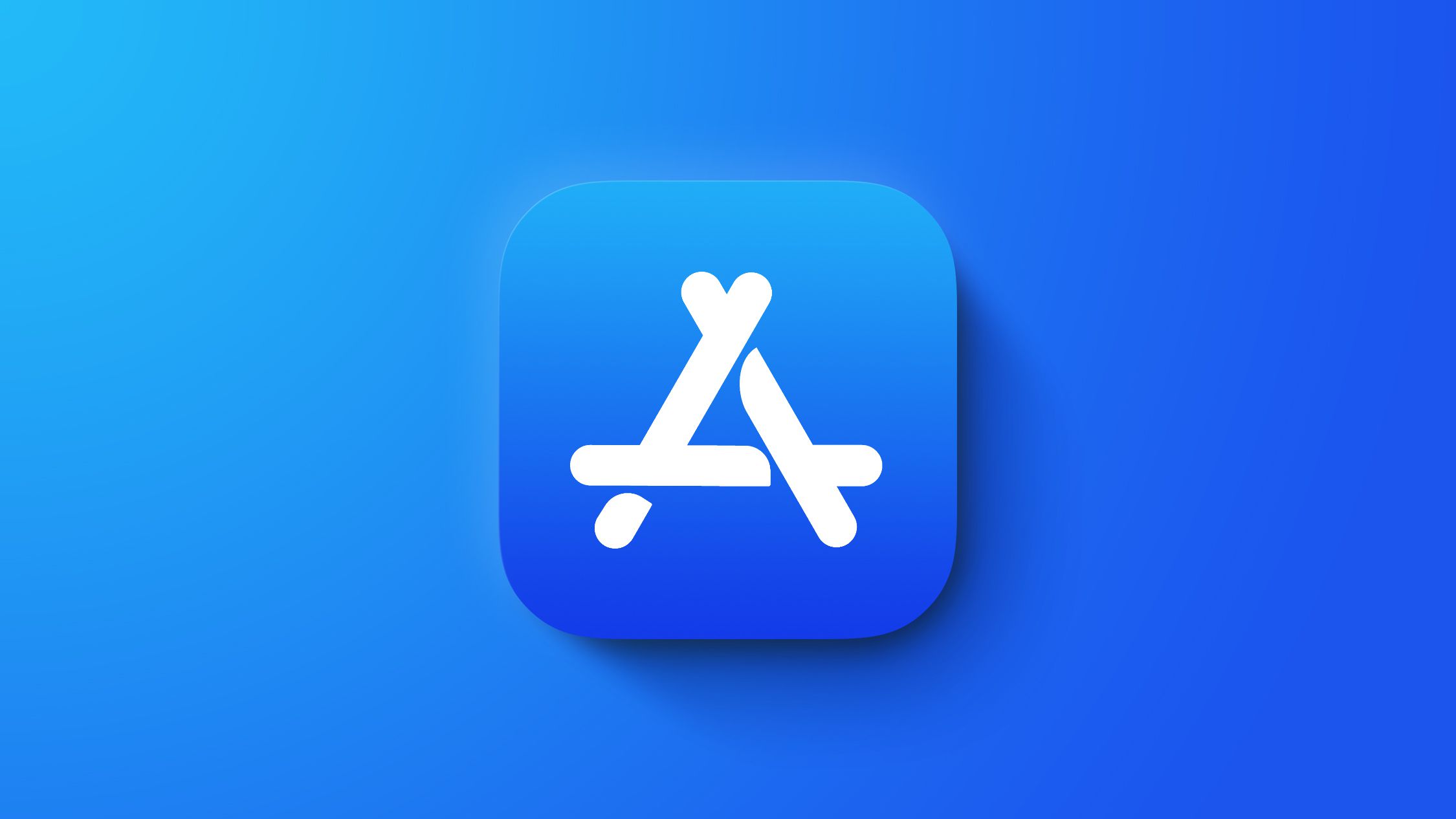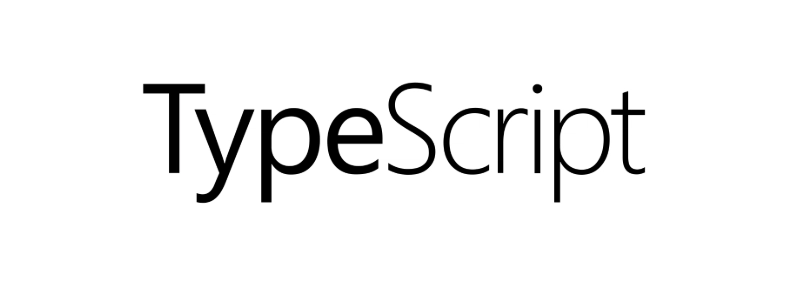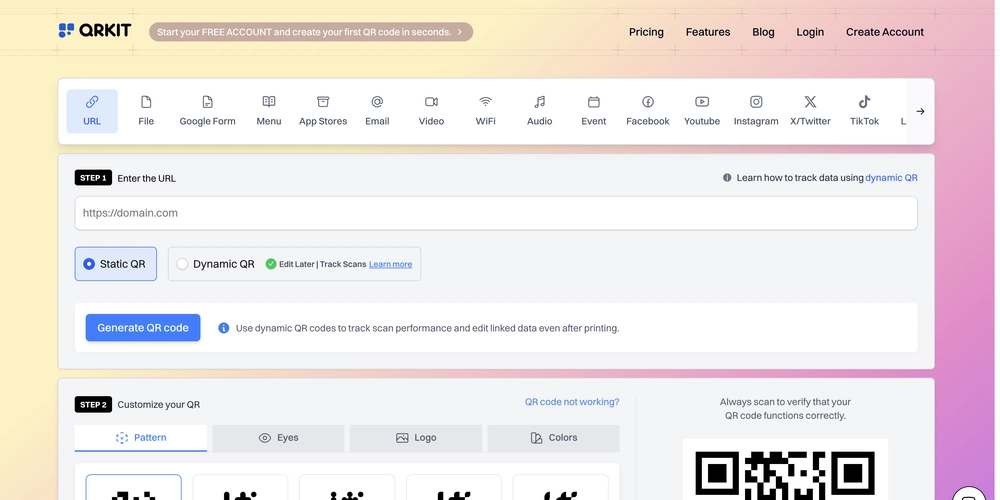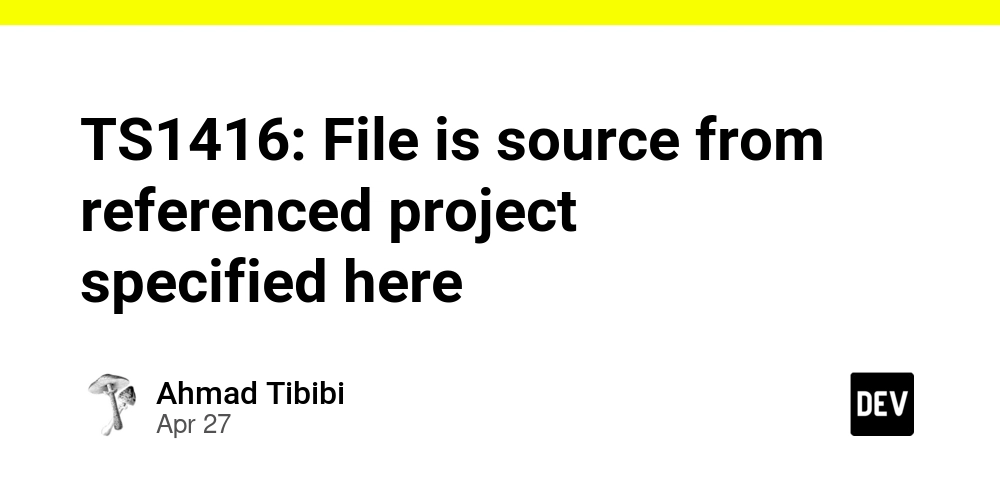Everything You Need to Know About SolidJS
What makes SolidJS different from other JavaScript frameworks, and is it worth your time as a developer in 2025? As a software engineer myself, this framework caught my eye, not only because it looks like React, but rather for its fast performance. I love writing code, especially with React, but SolidJS offers something special that deserves attention. SolidJS has been gaining significant traction in the frontend development world. As developers seek alternatives to React and other established frameworks, Solid offers a compelling mix of performance and developer experience. Now let’s just dig deeper into how SolidJS is a very good and a solid choice for a frontend apps. The Performance Advantage First and foremost let’s talk about the performance advantage that SolidJS gives you as a Developer. SolidJS consistently ranks at the top of JavaScript framework benchmarks, often outperforming React, Vue, and Angular by significant margins. This isn’t just marketing — it’s measurable in real-world applications. The key to Solid’s speed lies in its compilation approach. Unlike React, which uses a virtual DOM and constant re-rendering, SolidJS compiles your components into efficient DOM operations that run once and then update only what’s needed. This architectural difference means that Solid applications typically run 5–10x faster than equivalent React applications, with smoother rendering and less jank during complex UI updates. Fine-Grained Reactivity Reactive by design Solid’s reactivity system is built on fine-grained reactivity principles, similar to Vue’s Composition API but with even less overhead. Your UI updates automatically when data changes, without unnecessary re-renders. This approach eliminates the need for complex optimization strategies like memoization, useMemo, or shouldComponentUpdate that React developers often struggle with. In practice, this means your application logic becomes more straightforward. When a piece of state changes, only the DOM nodes that depend on that state update, not entire component trees. So you can basically say that SolidJS is a super fast JavaScript framework that updates only what’s needed, making it perfect for building apps with great detail and control. Developer Experience Let’s now talk about your Experience as a developer with SolidJS. Mental model simplicity is where Solid shines. If you understand JavaScript, you can understand Solid. There’s no special template syntax to learn, just JavaScript functions that return JSX. Components in Solid are simple factory functions that run once. They set up reactivity and return JSX — then they’re done. This is fundamentally different from React’s constant re-rendering of components. For developers frustrated with the complexity of hooks in React, or the unexpected re-render behavior, Solid offers a refreshingly predictable development experience. Now let’s look at something that a lot of devs don’t consider. Bundle Size and Performance Bundle size is another consideration. At roughly 7kb minified and gzipped, Solid is substantially smaller than React (around 40kb with React DOM). This matters for performance, especially on mobile devices. The small footprint means faster load times and better performance on lower-end devices. In 2025, as web applications continue to grow in complexity, keeping the framework overhead minimal becomes increasingly important. This size difference is not just about the initial download. The JavaScript execution time also impacts performance significantly. Smaller bundles generally mean less JavaScript to parse, compile, and execute, resulting in faster Time to Interactive metrics. In real-world applications, this translates to tangible benefits for users. A framework that loads 30kb less JavaScript can mean the difference between a user engaging with your content or bouncing from frustration, especially on slower connections or budget devices common in emerging markets. The Core Web Vitals metrics that Google uses to evaluate page experience are directly impacted by bundle size. Smaller bundles contribute to better Largest Contentful Paint (LCP) times and improved First Input Delay (FID) scores, which can positively affect SEO rankings and user experience. SolidJS achieves this efficiency without sacrificing developer ergonomics. Unlike some other lightweight alternatives that require verbose code or manual optimizations, Solid maintains a clean API while delivering exceptional performance. For enterprise applications where every kilobyte matters at scale, these savings multiply across millions of user sessions, potentially reducing CDN costs and bandwidth usage significantly over time. Before we go to the familiarity between React and SolidJS let’s look at something that’s very important, wish is TypeScript integration. Solid was written in TypeScript and designed to provide a great developer

What makes SolidJS different from other JavaScript frameworks, and is it worth your time as a developer in 2025?
As a software engineer myself, this framework caught my eye, not only because it looks like React, but rather for its fast performance. I love writing code, especially with React, but SolidJS offers something special that deserves attention.
SolidJS has been gaining significant traction in the frontend development world. As developers seek alternatives to React and other established frameworks, Solid offers a compelling mix of performance and developer experience.
Now let’s just dig deeper into how SolidJS is a very good and a solid choice for a frontend apps.
The Performance Advantage
First and foremost let’s talk about the performance advantage that SolidJS gives you as a Developer.
SolidJS consistently ranks at the top of JavaScript framework benchmarks, often outperforming React, Vue, and Angular by significant margins. This isn’t just marketing — it’s measurable in real-world applications.
The key to Solid’s speed lies in its compilation approach. Unlike React, which uses a virtual DOM and constant re-rendering, SolidJS compiles your components into efficient DOM operations that run once and then update only what’s needed.
This architectural difference means that Solid applications typically run 5–10x faster than equivalent React applications, with smoother rendering and less jank during complex UI updates.
Fine-Grained Reactivity
Reactive by design
Solid’s reactivity system is built on fine-grained reactivity principles, similar to Vue’s Composition API but with even less overhead. Your UI updates automatically when data changes, without unnecessary re-renders.
This approach eliminates the need for complex optimization strategies like memoization, useMemo, or shouldComponentUpdate that React developers often struggle with.
In practice, this means your application logic becomes more straightforward. When a piece of state changes, only the DOM nodes that depend on that state update, not entire component trees.
So you can basically say that SolidJS is a super fast JavaScript framework that updates only what’s needed, making it perfect for building apps with great detail and control.
Developer Experience
Let’s now talk about your Experience as a developer with SolidJS.
Mental model simplicity is where Solid shines.
If you understand JavaScript, you can understand Solid. There’s no special template syntax to learn, just JavaScript functions that return JSX.
Components in Solid are simple factory functions that run once. They set up reactivity and return JSX — then they’re done. This is fundamentally different from React’s constant re-rendering of components.
For developers frustrated with the complexity of hooks in React, or the unexpected re-render behavior, Solid offers a refreshingly predictable development experience.
Now let’s look at something that a lot of devs don’t consider.
Bundle Size and Performance
Bundle size is another consideration. At roughly 7kb minified and gzipped, Solid is substantially smaller than React (around 40kb with React DOM).
This matters for performance, especially on mobile devices.
The small footprint means faster load times and better performance on lower-end devices.
In 2025, as web applications continue to grow in complexity, keeping the framework overhead minimal becomes increasingly important.
This size difference is not just about the initial download. The JavaScript execution time also impacts performance significantly. Smaller bundles generally mean less JavaScript to parse, compile, and execute, resulting in faster Time to Interactive metrics.
In real-world applications, this translates to tangible benefits for users. A framework that loads 30kb less JavaScript can mean the difference between a user engaging with your content or bouncing from frustration, especially on slower connections or budget devices common in emerging markets.
The Core Web Vitals metrics that Google uses to evaluate page experience are directly impacted by bundle size. Smaller bundles contribute to better Largest Contentful Paint (LCP) times and improved First Input Delay (FID) scores, which can positively affect SEO rankings and user experience.
SolidJS achieves this efficiency without sacrificing developer ergonomics. Unlike some other lightweight alternatives that require verbose code or manual optimizations, Solid maintains a clean API while delivering exceptional performance.
For enterprise applications where every kilobyte matters at scale, these savings multiply across millions of user sessions, potentially reducing CDN costs and bandwidth usage significantly over time.
Before we go to the familiarity between React and SolidJS let’s look at something that’s very important, wish is TypeScript integration.
Solid was written in TypeScript and designed to provide a great developer experience with full type safety.
The framework’s APIs are fully typed, and the compiler provides helpful error messages when you make mistakes. This not only leads to fewer runtime errors but it leads to a better code quality overall.
Familiar yet different
Solid feels familiar to React developers — it uses JSX, props, and a component-based architecture. But its approach to state management and rendering is fundamentally different and more efficient.
Here’s a simple example:
In React:
function Counter() {
const [count, setCount] = useState(0);
return (
Count: {count}
);
}
In SolidJS:
function Counter() {
const [count, setCount] = createSignal(0);
return (
Count: {count()}
);
}
The syntax is similar, but the behavior is fundamentally different. The React component re-renders completely on every state change, while the Solid component only updates the text content inside the paragraph.
Every frontend framework is largely valued for how well it optimizes state management
Signals, stores, and effects form the core of Solid’s state management system. Unlike React’s useState and useEffect hooks, these primitives are designed around true reactivity.
Signals are the basic unit of state, similar to RxJS observables but optimized for UI rendering. They can be accessed and modified directly without complex state management libraries.
const [count, setCount] = createSignal(0);
const doubledCount = () => count() * 2;
The doubledCount derivation automatically updates whenever count changes, without explicit subscriptions or dependency arrays.
A frontend framework’s true power also lies in how efficiently it handles data fetching and asynchronous operations.
As for Solid the resource system provides an elegant solution for data fetching and asynchronous operations. It integrates cleanly with Solid’s reactivity system and simplifies handling loading states.
const [data] = createResource(fetchData);
return (
{data.loading && Loading...}
{data.error &&
Error: {data.error.message}}
{data() &&
);
This approach eliminates the need for complex state management just to handle loading and error states, a common pain point in React applications.
How about Server-Side rendering?
SSR support is robust in Solid. Unlike some frameworks where server-side rendering feels bolted on, Solid was designed with it in mind from the beginning. The Solid Start meta-framework provides a solid foundation for SSR applications.
What makes Solid’s SSR particularly powerful is how it integrates with its reactivity system. The same reactive primitives that make client-side code efficient also enable intelligent hydration on the client.
Real-World Success Stories
The performance benefits and developer experience improvements have translated to real business value. For example, one of my friends has an e-commerce business and reported a 30% improvement in core web vitals after migrating from React to Solid.js, leading to better conversion rates and user engagement.
In addition to individual success stories, several companies have adopted Solid.js and seen significant benefits. For instance:
- SimpliSafe, a home security company in the USA, uses Solid.js to build performant, user-friendly interfaces.
- Post in Colombia and ALTAMETRICS in the USA both use Solid.js for various tech solutions, taking advantage of its efficient state management and reactivity.
- Waypoint Studios in the UK and Angel Broking in India have also adopted Solid.js, noting its speed and developer-friendly nature as key reasons for the switch.
- These companies are just a few examples of how Solid.js is helping businesses create faster, more responsive web applications that improve user experience and operational efficiency.
The tradeoffs are real.
You’ll have a smaller ecosystem, fewer job opportunities specifically requesting Solid, and potentially more difficulty finding developers familiar with it compared to more established frameworks.
Training and onboarding new team members will require additional effort, and you may need to build more custom components rather than finding ready-made solutions.
But hey, as a software engineer learning Solid.js, this challenge can also be an opportunity to level up. You’ll gain deeper insights into how frameworks work under the hood, giving you a more solid grasp of JavaScript and the finer points of front-end development.
You might not have the vast selection of pre-built components that libraries like React or Vue offer, but the tradeoff is that you’ll get a more flexible, tailored experience.
Building custom components from scratch allows you to optimize for your exact needs, giving you more control and potentially better performance.
As for the smaller ecosystem, that’s also evolving rapidly, and the Solid.js community is super active and passionate.
Over time, more solutions and libraries will emerge, and your early investment could pay off as the ecosystem grows. Plus, when you’re working with something cutting-edge, you get to stand out — you’re part of a select group of developers pioneering the future.
The job market may not be as flooded with Solid.js opportunities right now, but having this niche skill can make you a highly desirable asset in specialized teams or companies looking for top-tier performance and minimal overhead.
And hey, if you’ve mastered Solid, you’ll likely have an easier time picking up other frameworks and languages that come down the road.
Final thoughts
SolidJS represents a genuinely innovative approach to UI development that’s worth your consideration in 2025. Its performance advantages are substantial, and its developer experience is refreshingly straightforward once you adapt to its reactive mindset.
If you’re starting a new project or considering a framework migration, give Solid a serious look, you might be surprised by how much it simplifies your development process while delivering exceptional performance.
Enjoyed this article? If you found it helpful, give it a like! And if you’re not following me yet, now’s the time.
I share real insights on software engineering, cybersecurity, and the latest tech trends — no fluff, just practical advice.































![[Free Webinar] Guide to Securing Your Entire Identity Lifecycle Against AI-Powered Threats](https://blogger.googleusercontent.com/img/b/R29vZ2xl/AVvXsEjqbZf4bsDp6ei3fmQ8swm7GB5XoRrhZSFE7ZNhRLFO49KlmdgpIDCZWMSv7rydpEShIrNb9crnH5p6mFZbURzO5HC9I4RlzJazBBw5aHOTmI38sqiZIWPldRqut4bTgegipjOk5VgktVOwCKF_ncLeBX-pMTO_GMVMfbzZbf8eAj21V04y_NiOaSApGkM/s1600/webinar-play.jpg?#)






































































































































![[The AI Show Episode 145]: OpenAI Releases o3 and o4-mini, AI Is Causing “Quiet Layoffs,” Executive Order on Youth AI Education & GPT-4o’s Controversial Update](https://www.marketingaiinstitute.com/hubfs/ep%20145%20cover.png)














































































































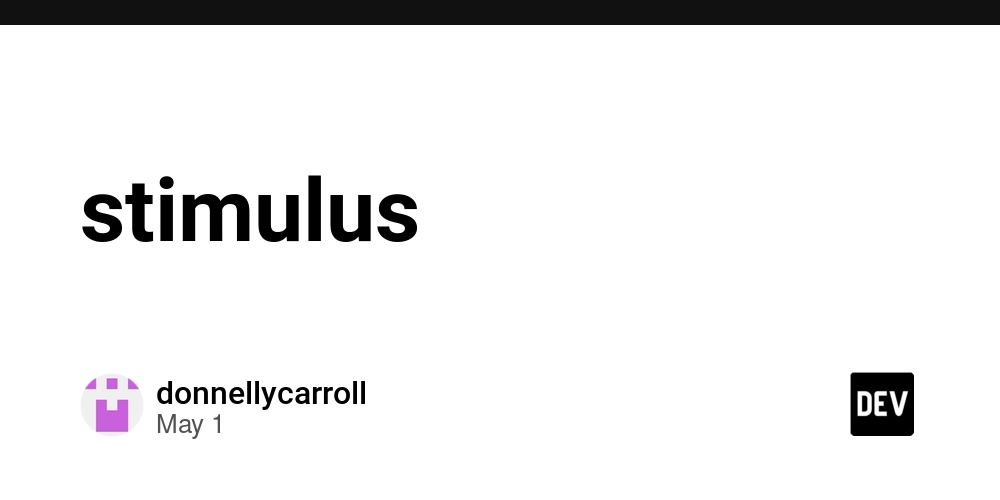
















































































































































































































































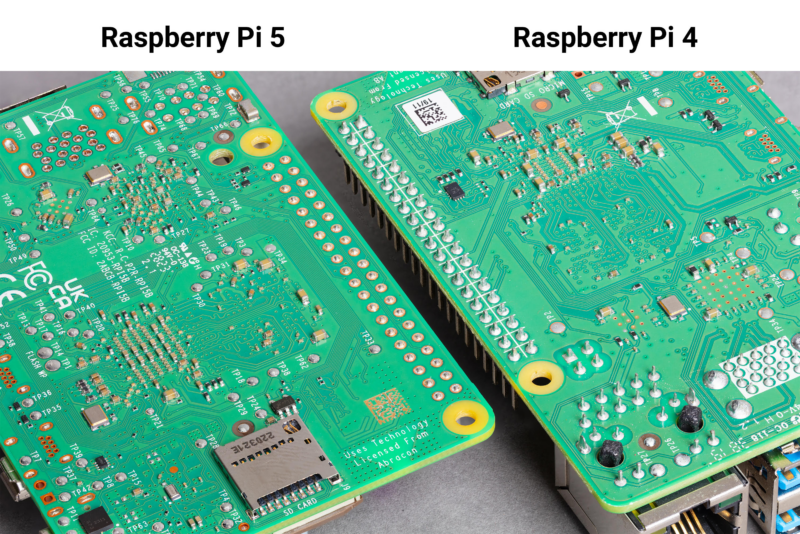


-xl.jpg)











![Google Home app fixes bug that repeatedly asked to ‘Set up Nest Cam features’ for Nest Hub Max [U]](https://i0.wp.com/9to5google.com/wp-content/uploads/sites/4/2022/08/youtube-premium-music-nest-hub-max.jpg?resize=1200%2C628&quality=82&strip=all&ssl=1)














![New Hands-On iPhone 17 Dummy Video Shows Off Ultra-Thin Air Model, Updated Pro Designs [Video]](https://www.iclarified.com/images/news/97171/97171/97171-640.jpg)
![Apple Shares Trailer for First Immersive Feature Film 'Bono: Stories of Surrender' [Video]](https://www.iclarified.com/images/news/97168/97168/97168-640.jpg)











































